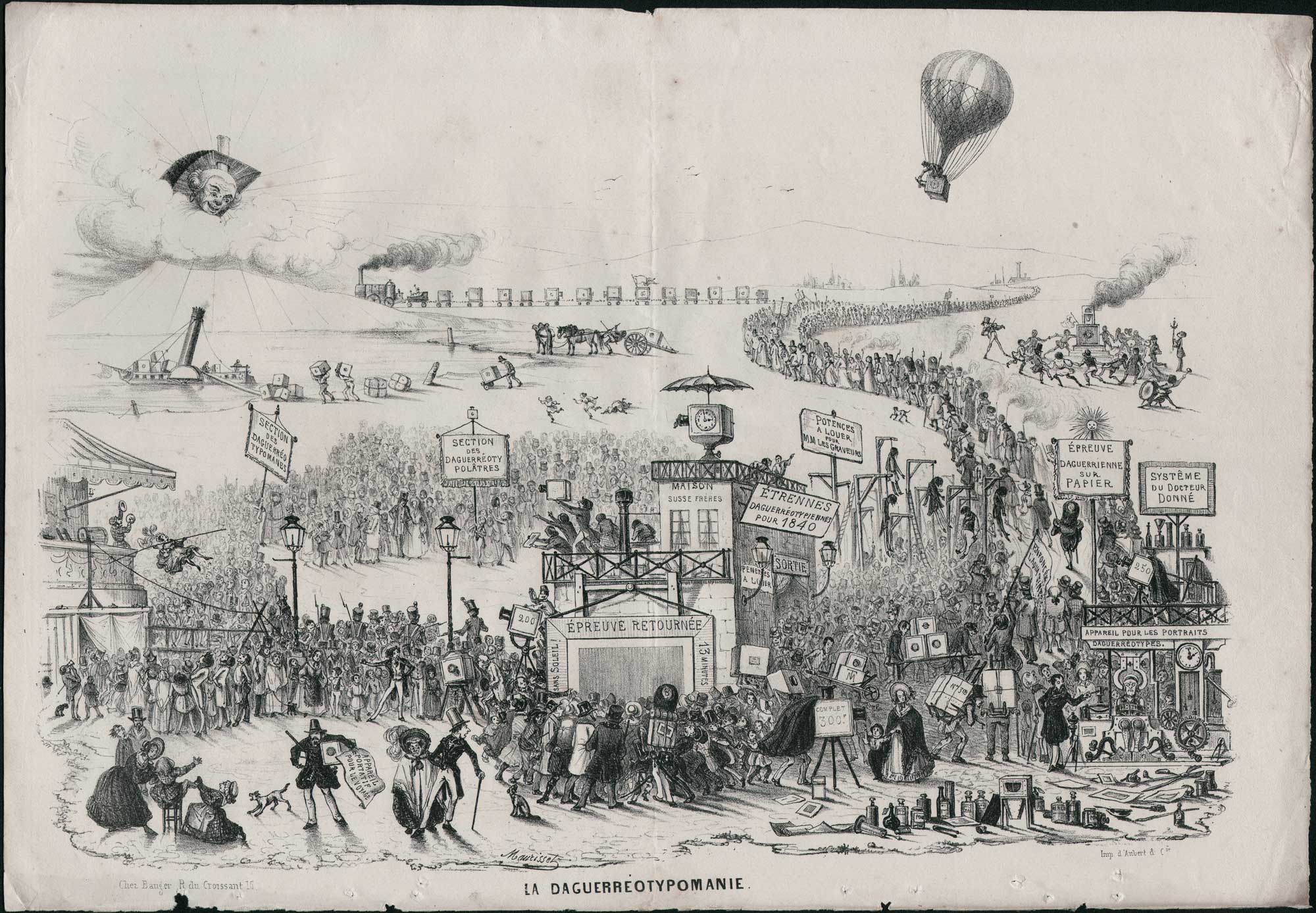
La Daguerréotypomanie
“THE daguerreotype was announced to the French public in January 1839. By December, the rage for it inspired Théodore Maurisset, an illustrator, to lampoon Parisians in La Caricature with a cartoon called ”Daguerreotypomania”: scores of people lining up for their photographic portraits while engravers, driven out of work by the new technology, hang themselves from gallows.” ⎯Michael Kimmelman, in the New York Times: September 26, 2003
“Théodore Maurisset’s lithograph playfully presents a time when vast crowds would line up to have their likenesses made. It chronicles the many ways entrepreneurs hoped to cash in on the craze, from selling supplies and equipment to giving lessons on how to make a daguerreotype.” (1.)
“Louis-Jacques-Mandé Daguerre (1787-1851) began investigating the possibilities of copying an image from nature using sunlight and chemicals in the early 1820s and entered into a partnership in 1829 with Nicéphore Niépce, who was also experimenting with similar concepts. Daguerre made the first successful daguerreotype in 1837, four years after Niépce’s death. In the summer of 1839 the French government agreed to pay Daguerre along with Niépce’s son a pension for their lifetimes in exchange for patent rights to the daguerreotype process and then immediately transferred the rights into the public domain. Once the secret procedures and chemical formulas were made known, the need for users to pay royalties or license fees to Daguerre was eliminated, causing a great rush by opportunity seekers.” (2.)
1-2. Adapted from Weston Naef, The J. Paul Getty Museum Handbook of the Photographs Collection (Los Angeles: J. Paul Getty Museum, 1995), 32.